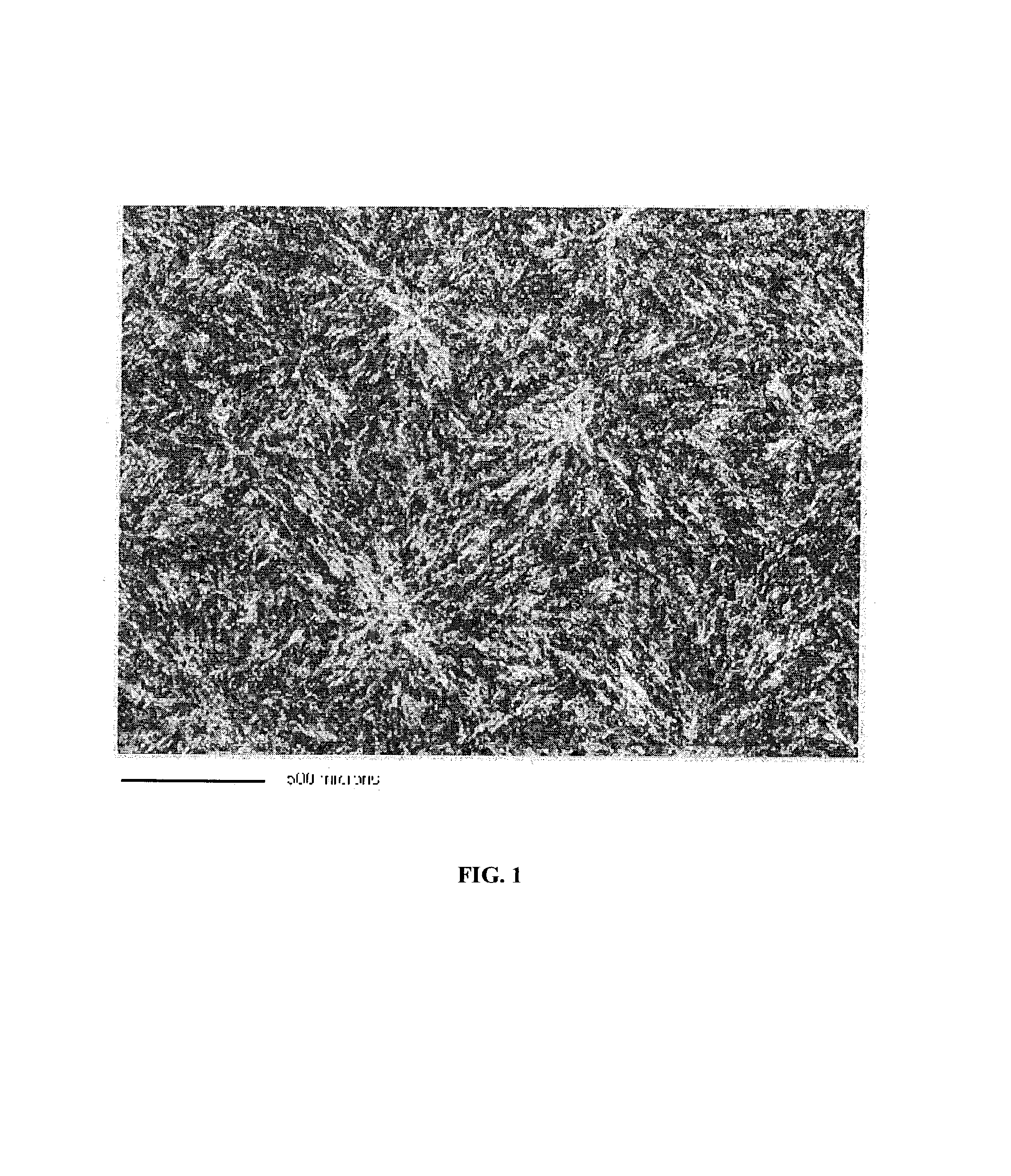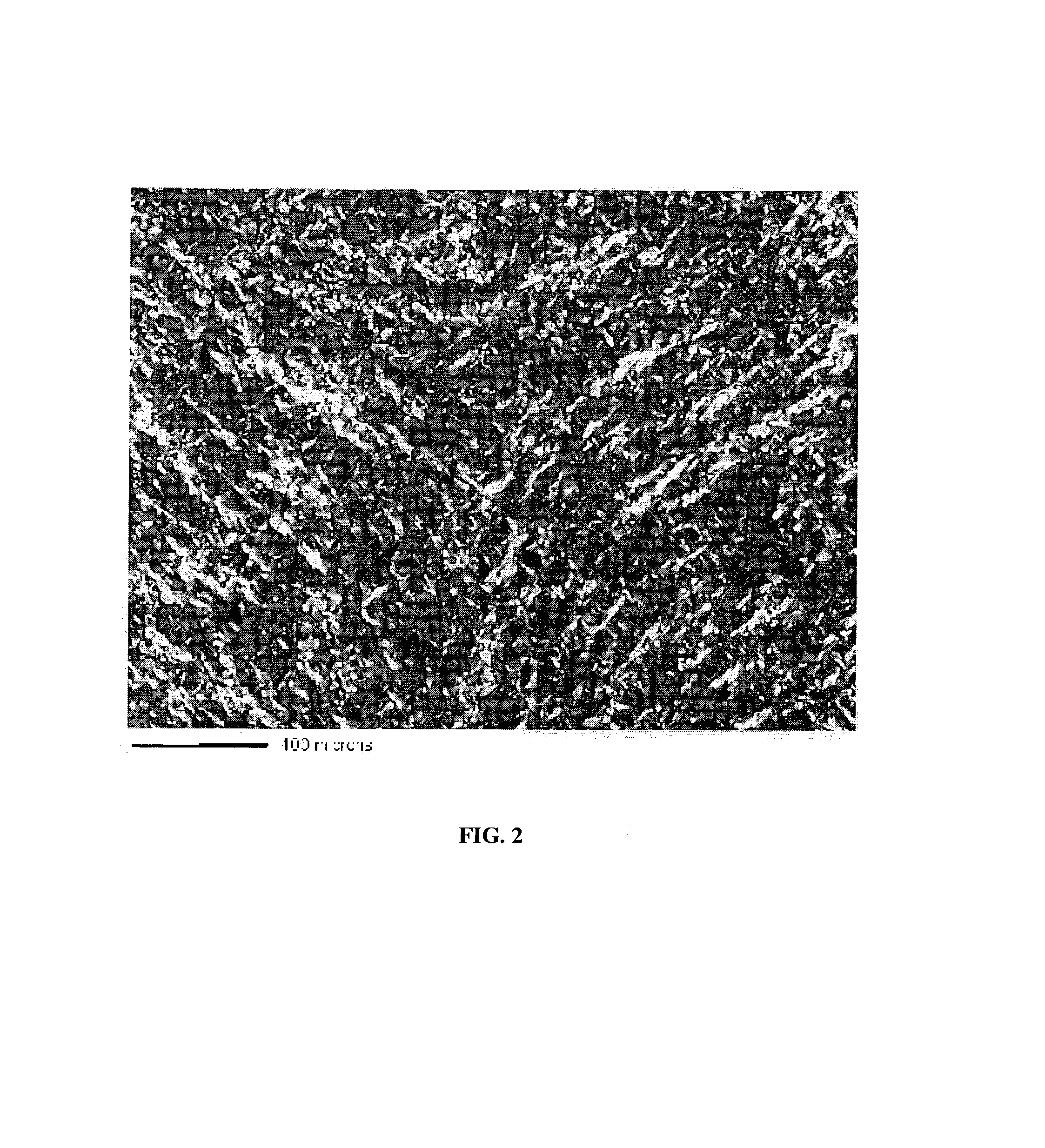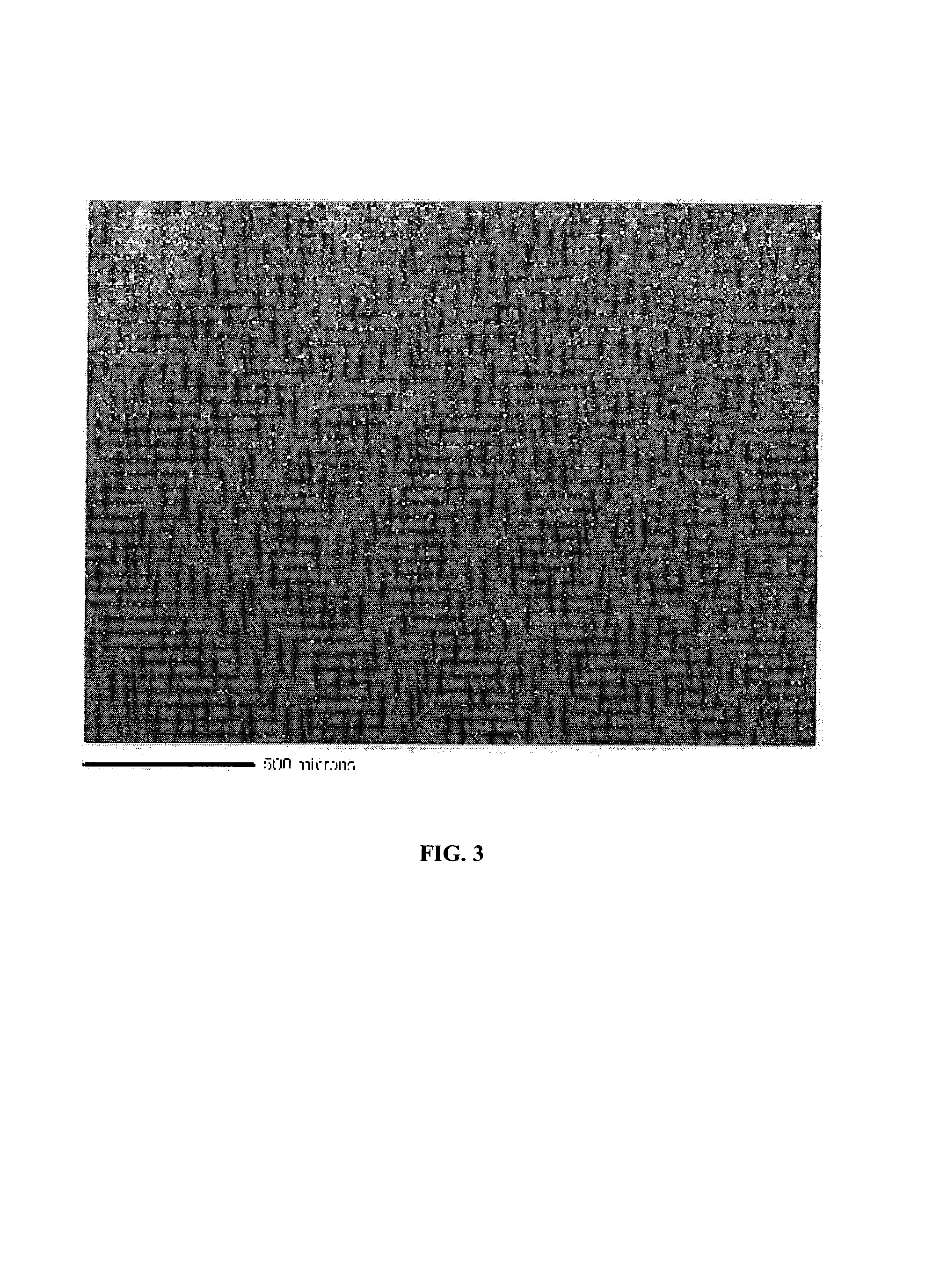Coatings and films derived from clay/wax nanocomposites
a technology of clay/wax nanocomposites and coatings, applied in the field of wax emulsions, can solve the problems of difficult recycling of laminate structures such as these, poor barrier of wax coatings to nonpolar gases, and slippery wax surfaces, etc., to improve the mechanical properties of the substrate, improve the barrier properties, and improve the effect of viscosity
- Summary
- Abstract
- Description
- Claims
- Application Information
AI Technical Summary
Benefits of technology
Problems solved by technology
Method used
Image
Examples
example 1
[0073]This example illustrates the superior barrier capabilities that can be achieved by dispersing organoclays of the present invention into paraffin wax. An organophilic clay was prepared from a commercially available, water-washed montmorillonite (Cloisite Na® which is a product of Southern Clay Products). The clay was dispersed in 40° C. tap water at a solids concentration of 2.5 weight percent by high-shear mixing for 40 minutes. The edge of the clay was modified by addition of an aqueous solution of the ammonium salt of 1-hydroxydodecane-1,1-diphosphonic acid. The amount of ammonium alkyldiphosphonate added was 3 weight percent relative to the weight of the dry clay. Following equilibration for 30 minutes, the temperature of the slurry was increased to 70° C. and an amount of dimethyl dihydrogenated tallow ammonium chloride (Arquad 2HT-75, a quaternary amine salt commercially available from Akzo Nobel) equivalent to 110 milliequivalents per 100 g clay was added over a period o...
example 2
[0084]In this example a wax nanocomposite with high organoclay loading is combined with low density polyethylene to provide flexible cast films. An organophilic clay was prepared as in Example 1 but without the addition of poly(propylene glycol) to the organoclay. Instead, the dry organoclay was combined by melt compounding with an equal weight of polyethylene-block-poly(ethylene glycol) having a hydrophilic lipophilic balance (HLB) value of 4. This in turn was combined by melt compounding with a 50:50 mixture of paraffin wax and low density polyethylene having a melting point of 104–115° C. The organoclay content of the nanocomposite was 21.8 weight percent and the ash content was 13.5 weight percent. Paraffin wax is not compatible with polyethylenes, but in this example the presence of the organoclay in combination with the polyethylene-block-poly(ethylene glycol) prevents phase separation of the paraffin upon cooling from the melt.
[0085]When the polyethylene was combined with the...
example 3
[0089]This example shows the effect of wax melt / freeze point on barrier properties. The organoclay filter cake of Example 1 was dispersed in a high melting wax (Paraflint H1 from Moore & Munger, Inc.) at 100° C. to flush the water from the filter cake. The final organoclay concentration was 10 weight percent. Films were cast on paper and oxygen transmission rate was measured. For the nanocomposite and the pure wax. A second nanocomposite was prepared by adding 10 weight percent LDPE to the wax nanocomposite.
[0090]The oxygen permeabilities are reported in Table 2. In this case the reduction in gas transport is less effective than in Example 1 due to the greater difference in freezing points of the wax and the organoclay. The Paraflint H1 has a softening point of 104° C. and a recrystallization transition that begins at about 95° C. As the difference in the freezing points widens, the ability of the organoclay to reduce gas transmission is reduced. A 10 weight percent clay loading red...
PUM
| Property | Measurement | Unit |
|---|---|---|
| Percent by mass | aaaaa | aaaaa |
| Percent by mass | aaaaa | aaaaa |
| Percent by mass | aaaaa | aaaaa |
Abstract
Description
Claims
Application Information
 Login to View More
Login to View More - R&D
- Intellectual Property
- Life Sciences
- Materials
- Tech Scout
- Unparalleled Data Quality
- Higher Quality Content
- 60% Fewer Hallucinations
Browse by: Latest US Patents, China's latest patents, Technical Efficacy Thesaurus, Application Domain, Technology Topic, Popular Technical Reports.
© 2025 PatSnap. All rights reserved.Legal|Privacy policy|Modern Slavery Act Transparency Statement|Sitemap|About US| Contact US: help@patsnap.com



